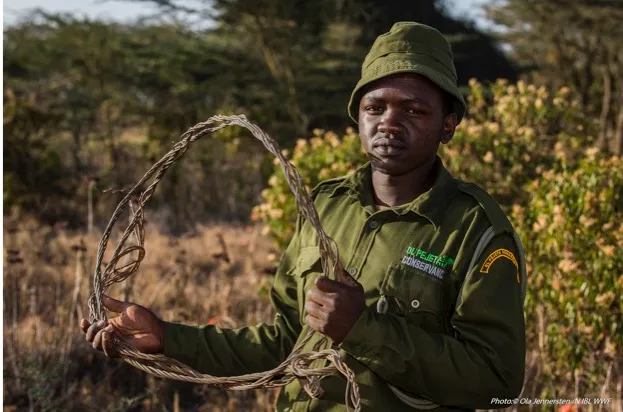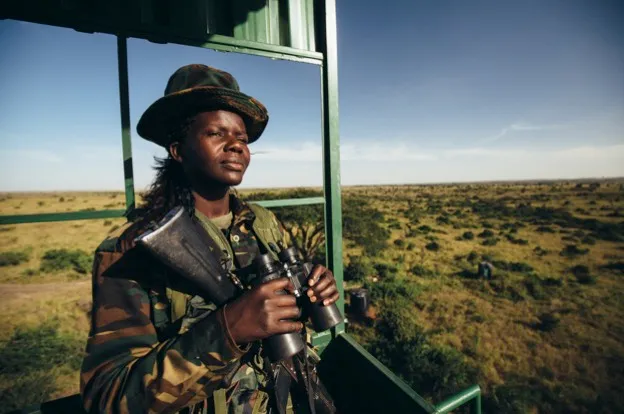They are in the frontline of the battle to stop poachers from illegally killing wildlife.
Every day, they protect iconic species such as elephants, rhinos and lions from ending up as artefacts or jewelry or as the victims of human-wildlife conflict.
Without them, watching wildlife in Africa would almost certainly not be the extraordinary experience it is today.

But now we know that 82% of 570 wildlife rangers in Africa have faced a life-threatening situation while carrying out their job.
Two-thirds of all rangers have been attacked by poachers, while more than 70% have been threatened. Four out of five have had dangerous encounters with wildlife.
WWF, which carried out the survey, says 59% of respondents said they were not provided with the necessary equipment to ensure their safety, while 42% felt they were not adequately trained.
And 19% identified low and sometimes irregular pay as the worst aspect of being a ranger, while 12% highlighted the dangerous working conditions.

Chris Galliers, chairman of the Game Rangers Association of Africa, said: “We must invest in rangers by putting in place the right support systems, as it is this investment that will secure our wild places and wildlife assets for all, forever.”
WWF said it was critical to improve basic employment conditions for rangers and ensure they were adequately trained and equipped.
The survey comes at a time when the level of poaching – especially of elephants and rhinos – is at a level not seen since the 1980s.
The number of rhinos known to have been illegally killed for their horns across the whole of Africa was 1,338 in 2015, out of some 25,000 individual animals – some 5% of the population.
The number of elephants dying at the hands of poachers to supply the booming ivory trade is estimated at more than 30,000 a year, out of a population of some 400,000 individuals.
A study published in 2014 warned that elephants in Central Africa were being especially badly hit, with numbers dropping by 66% between 2002 and 2012.
“There are a number of populations that are at a really high risk of being wiped out,” said the lead author of the research, George Wittemyer of Colorado State University.
Main image: Sniffer dogs at Ol Pejeta Conservancy are used to track poachers, detect ammunition or even to attack suspects. © Ola Jennersten/NIBL WWF
